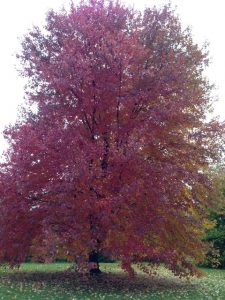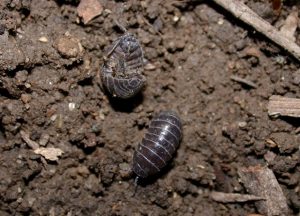Q. Last year was our first year for mature, pickable strawberries. They were bountiful and delicious, but it was hard to get to them before pillbugs did, even by picking daily. Do you recommend any tips or food-safe treatments to keep these or other pests away?
A. It is so very frustrating when insect pests and critters beat us to the harvest! Pillbugs are small, gray creatures with seven pairs of legs; they roll themselves into a ball when disturbed. They are scavengers that feed on decaying vegetative matter so you’re on the right track with harvesting daily. Pillbugs thrive in moist conditions with a lot of organic material, so pulling back your mulch and allowing the bed to dry a bit more between watering will provide a less hospitable environment. If the planting is really crowded with runner plants, you might consider thinning them out at post-harvest renovation. I am not aware of an insecticide that can be used at harvest time that would provide effective control. Additional information can be found in the Purdue Extension bulletin Millipedes, Sowbugs, Pillbugs athttp://www.extension.entm.purdue.edu/publications/E-55.pdf.

Red maple tree in fall color. Photo credit: Rosie Lerner/Purdue Horticulture & Landscape Architecture
Q. We have a 25-year old maple tree that I always thought was a silver maple, as we have two others that turn a beautiful yellow-gold in the fall. Both of those were very pretty this year and have dropped their leaves. The third one is still as green as in July. It has dropped a few green leaves, but most are still there but hanging down. Why won’t this tree turn like the others?
A. It is very possible that your tree that does not show good color is a different species from the other two. Fall color in maples is largely a matter of genetics, though they are certainly affected by weather, too. Identification of red and silver maples can be confusing – red maples more typically have showier fall color. The leaves of red maple can have three or five lobes, while those of silver maple more consistently have five lobes. Fall color varies considerably within a particular species, and sometimes even within a cultivar of maple. Silver maple typically displays greenish, yellow-brown fall color, but can sometimes show a bit of red. Fall color in red maples ranges from yellow to intense red, but seedling offspring may be more greenish-yellow. And, of course, there are other species such as sugar maple that also display excellent fall color. There are numerous hybrid maples both in nature and in the trade, so it is no wonder that they are frequently victims of mistaken identity.
Q. My neighbor told me that you had printed an article about “torpedo” bushes that throw a black speck. If so, can you tell me what type of bush this is? We park our white car next to our bushes and have some type of black dot or specks on it. We are wondering if this could be the culprit. Also, do you have an easy solution for removing them?
A. I believe you are referring to artillery fungi that thrive in moist, organic mulch, rather than a specific shrub. The spore-bearing fruiting structures of artillery fungi are very small, one-tenth of an inch across, and are very hard to see in the mulch. Their exploding “spore packets” are sticky, enabling them to adhere to plants, house siding, car windshields and pretty much anything else in their path. The fungus is sensitive to light and will direct the spore packets toward a light source, including reflected light off of light-colored buildings or vehicles. Attempting to remove the spots from surfaces is difficult and often futile. You can try soaking the area with soap and water, followed by gentle scraping to loosen, but take care to avoid damage to the surface or paint. Switching to coarser-textured mulch that holds less moisture should help reduce the occurrence of artillery fungi. Remove the existing mulch and replace with coarse-grade bark chips or nuggets, or nonorganic mulch such as gravel, stone or plastic. More information about this nuisance can be found athttp://www.ppdl.purdue.edu/PPDL/weeklypics/2-26-07.html.
